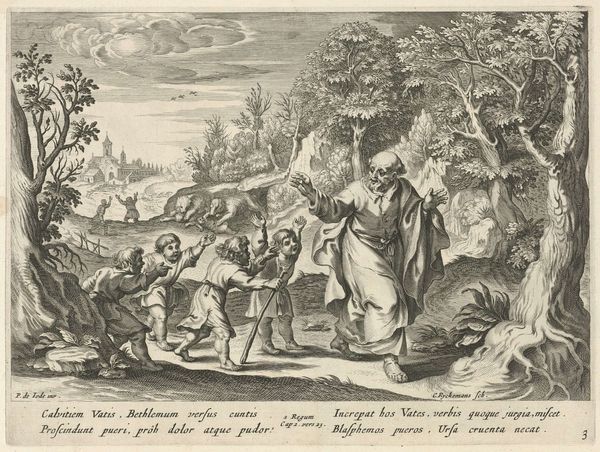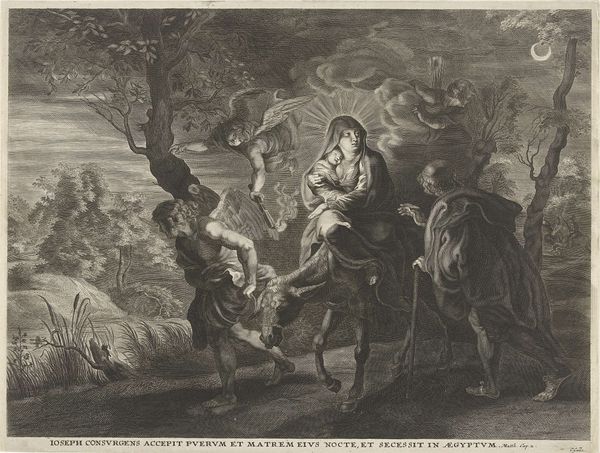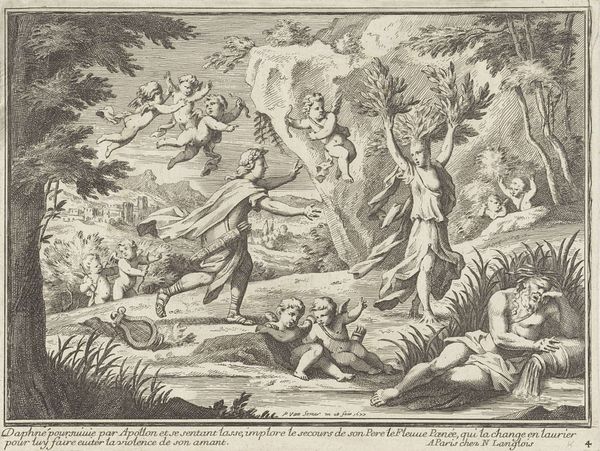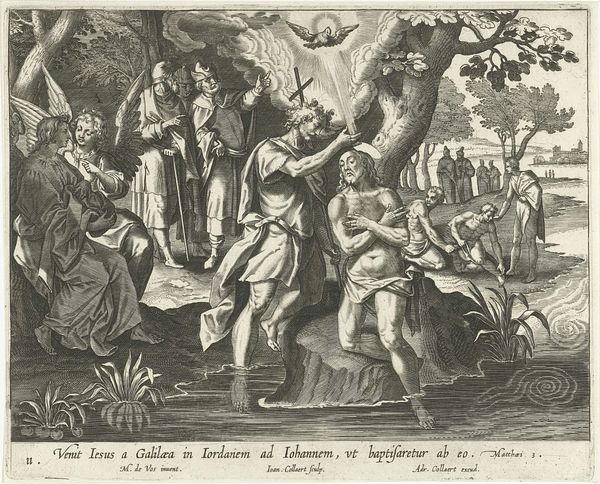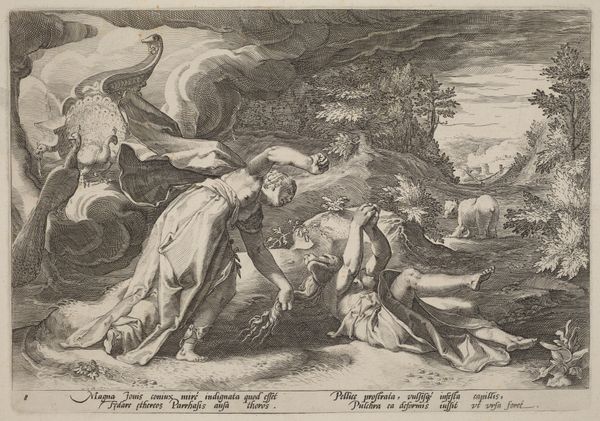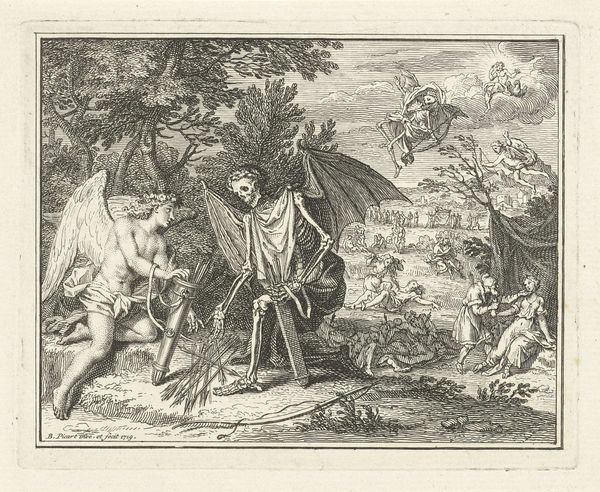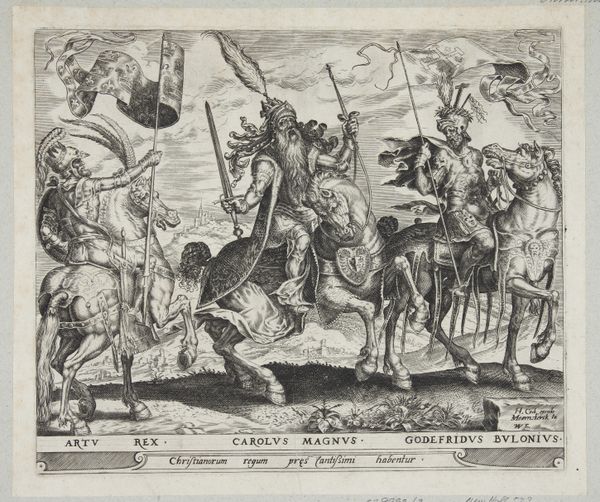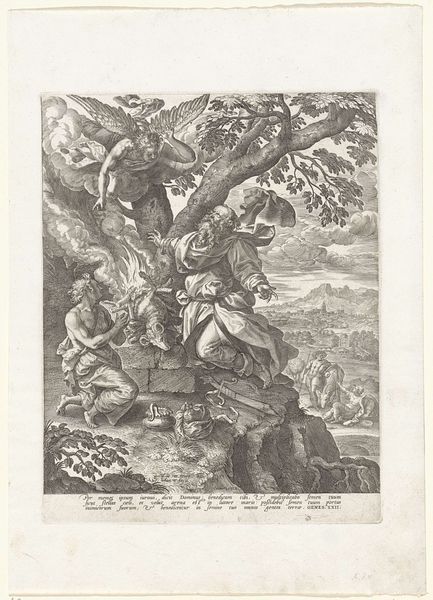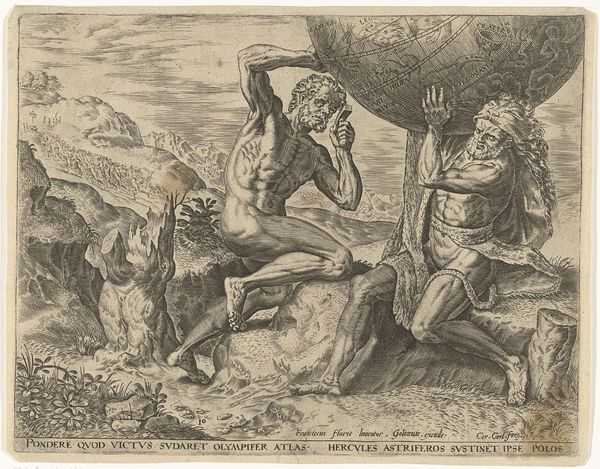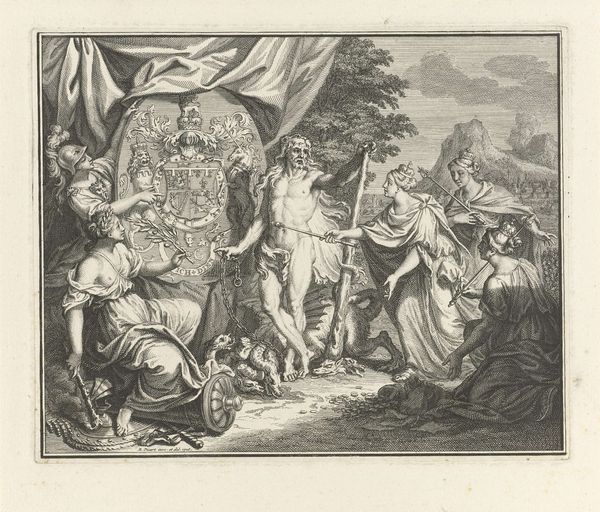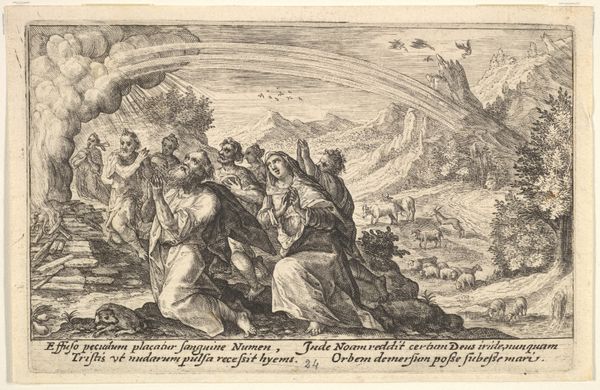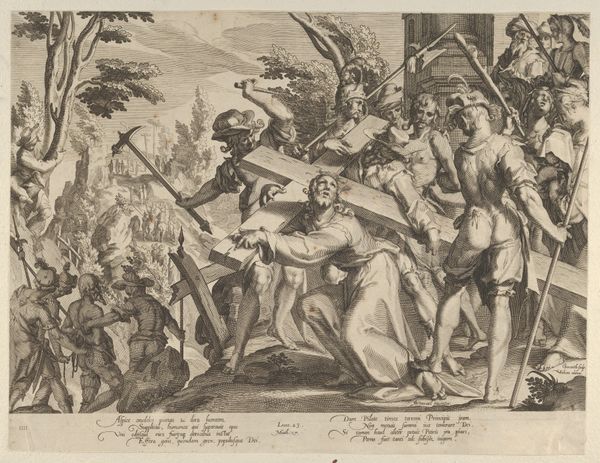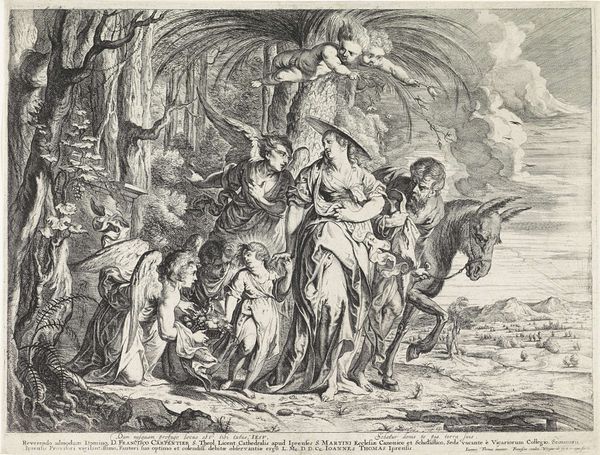
print, engraving
#
pencil drawn
#
baroque
# print
#
old engraving style
#
figuration
#
pencil drawing
#
history-painting
#
engraving
Dimensions: height 406 mm, width 451 mm
Copyright: Rijks Museum: Open Domain
Editor: Here we have "Venus wijst Aeneas zijn wapenrusting," or "Venus pointing out Aeneas's armor," an engraving by Francesco Faraone Aquila, created sometime between 1686 and 1740. The detail is astonishing. I’m curious – when you look at this, what aspects of its history and social context jump out at you? Curator: Well, this piece, being a print after a painting by Poussin, really highlights the role of reproductive engraving in disseminating artistic ideas during the Baroque period. Prints like these democratized access to art, allowing wider audiences to engage with classical themes and styles. Think about how crucial printmaking was before photography. How do you think its public role shaped its visual language? Editor: So, this wasn't just art for the elite; it was meant to circulate. I see that classicism referenced. What kind of message were they trying to convey? Curator: Exactly! Prints functioned as tools for cultural education and political messaging. Here, you have a scene rooted in Virgil's Aeneid. It emphasizes themes of heroism, divine intervention, and the founding of Rome – very potent stuff. Given that political landscape, can you infer why those specific narratives would be chosen at this time? Editor: Hmmm…so maybe reflecting on earlier imperial power, it was about connecting current rulers to that past? I hadn’t thought of it like that! Curator: Precisely. By visually connecting themselves to that Roman history, contemporary powers could legitimize and bolster their authority, using these stories. It's a fascinating demonstration of art serving specific political aims. Editor: That's a completely different way of seeing this piece. Thanks, I've got so much more to think about. Curator: Indeed! Looking at art through the lens of its public role truly reveals the dialogue that an image fosters within society.
Comments
No comments
Be the first to comment and join the conversation on the ultimate creative platform.
